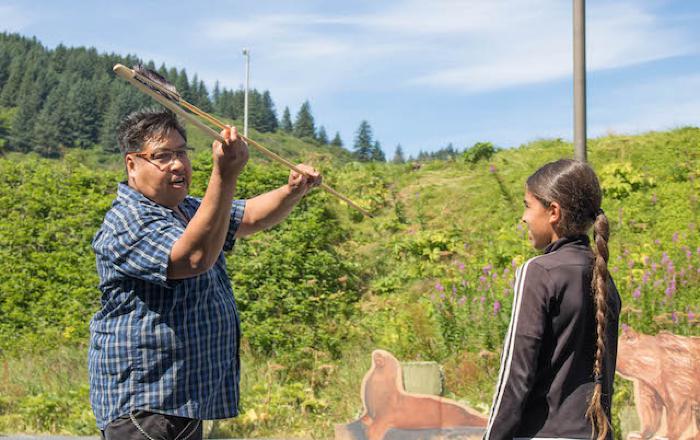Throwing Board — Nuqaq

Hunting with hand-propelled weaponry requires great strength and precision, particularly when you are pursuing sea mammals from a kayak in the open ocean. Alutiiq hunters improved the speed, force, and distance of their harpoon throws by employing a throwing board. This device was about a foot and a half long and carved of wood. It had a handgrip on one end, a long central body with a groove for a harpoon shaft, and a small pin at the far end. A hunter laid a harpoon in the thrower and then held the complete assembly behind his shoulder. When he was ready to throw, the hunter simply swung his arm forward and snapped his wrist to launch the harpoon. The leverage provided by the thrower acted as an extension of the hunter’s arm, creating a faster, more powerful throw.
Throwing boards, also known as atlatls, were once used all over the world. On Kodiak, they are very ancient. Throwing board parts from the Rice Ridge site near Cape Chiniak suggest that Kodiak hunters employed these tools more than seven thousand years ago. Similarly, a tiny ivory carving of a throwing board from the Uyak site in Larsen Bay suggests that the practice remained in place 1,500 years ago. In more recent times, Alutiiq throwing boards were embellished with animal carvings or painted designs. Sea otters and seal flippers are some of the motifs that adorn these ingenious tools.
